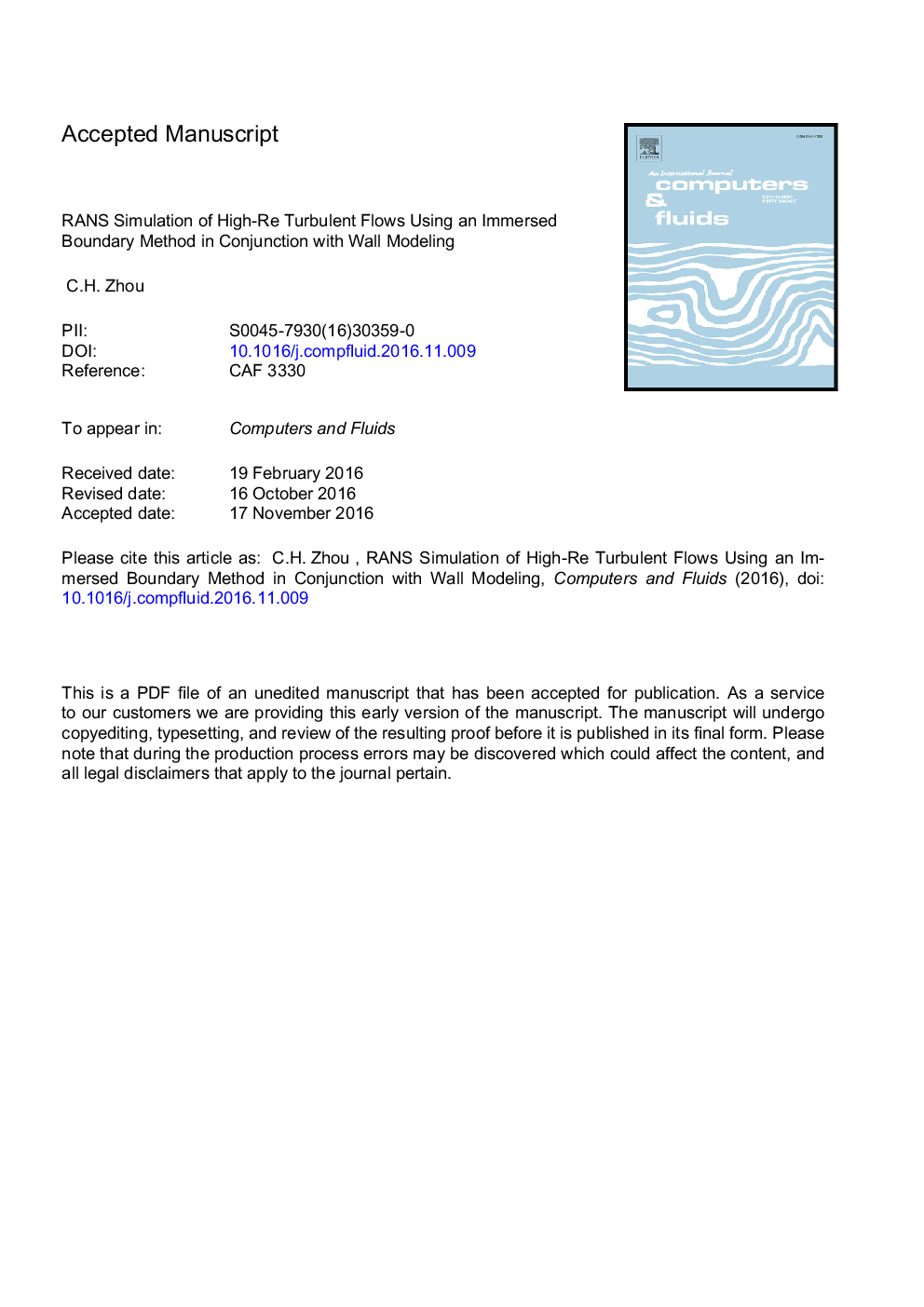| کد مقاله | کد نشریه | سال انتشار | مقاله انگلیسی | نسخه تمام متن |
|---|---|---|---|---|
| 5012003 | 1462668 | 2017 | 61 صفحه PDF | دانلود رایگان |
عنوان انگلیسی مقاله ISI
RANS simulation of high-Re turbulent flows using an immersed boundary method in conjunction with wall modeling
دانلود مقاله + سفارش ترجمه
دانلود مقاله ISI انگلیسی
رایگان برای ایرانیان
کلمات کلیدی
موضوعات مرتبط
مهندسی و علوم پایه
سایر رشته های مهندسی
مکانیک محاسباتی
پیش نمایش صفحه اول مقاله

چکیده انگلیسی
In this paper, an immersed boundary method, called the domain-free discretization (DFD) method, is developed to simulate the turbulent flows at high Reynolds numbers governed by the RANS equations. The strategy of DFD is that the discrete form of partial differential equations at an interior mesh node may involve some nodes outside the solution domain. Wall-modeling techniques, such as the adaptive wall function and the two-layer wall model, are adopted to alleviate the requirement on the near-wall mesh size. In the two-layer wall model, the effect of streamwise pressure gradient can be taken into account. The no-penetration condition and the wall shear stress prescribed by wall modeling, instead of the no-slip condition, are enforced at the immersed boundary. The normal and tangential velocity components at an exterior dependent node are evaluated via the linear extrapolation in the normal direction in conjunction with the no-penetration condition and the prescribed shear stress, respectively. The pressure at an exterior dependent node is obtained by solving the simplified momentum equation, and the temperature is calculated via the Crocoo-Busemann relation. By using analytical solutions, appropriate boundary conditions for the SST kâÏ turbulence model equations are specified and then the turbulence variables at an exterior dependent node are determined. Various subsonic and transonic high-Re turbulent flows over stationary and moving bodies have been simulated to validate the present developed DFD method.
ناشر
Database: Elsevier - ScienceDirect (ساینس دایرکت)
Journal: Computers & Fluids - Volume 143, 17 January 2017, Pages 73-89
Journal: Computers & Fluids - Volume 143, 17 January 2017, Pages 73-89
نویسندگان
C.H. Zhou,